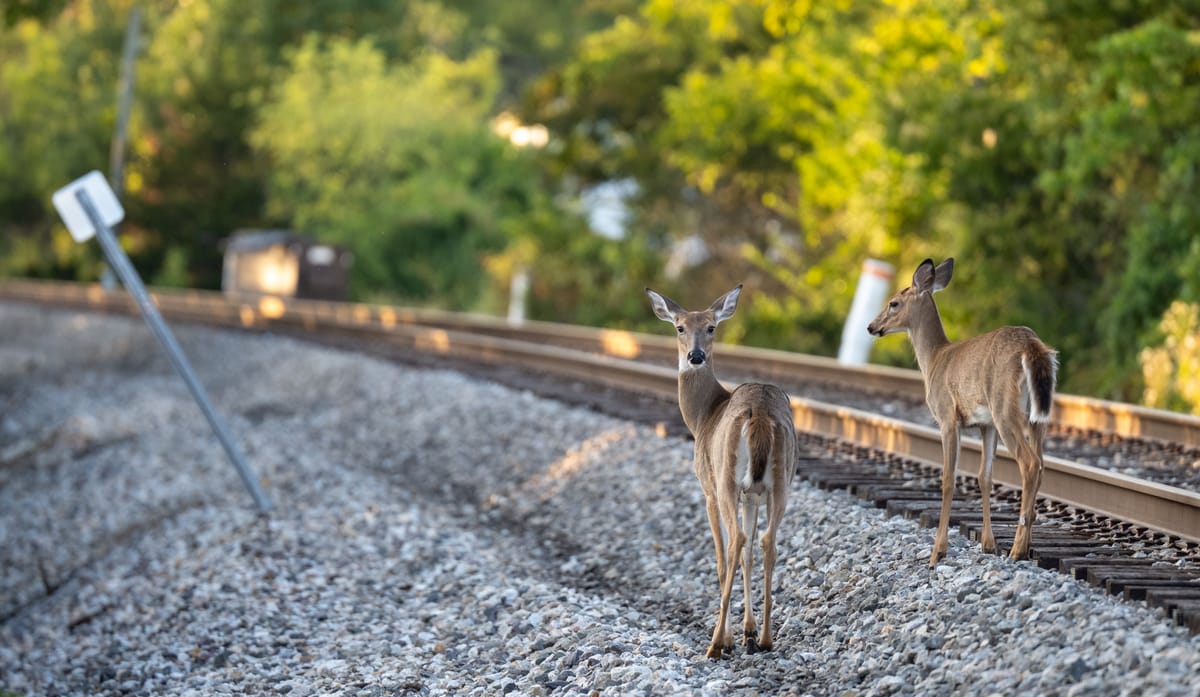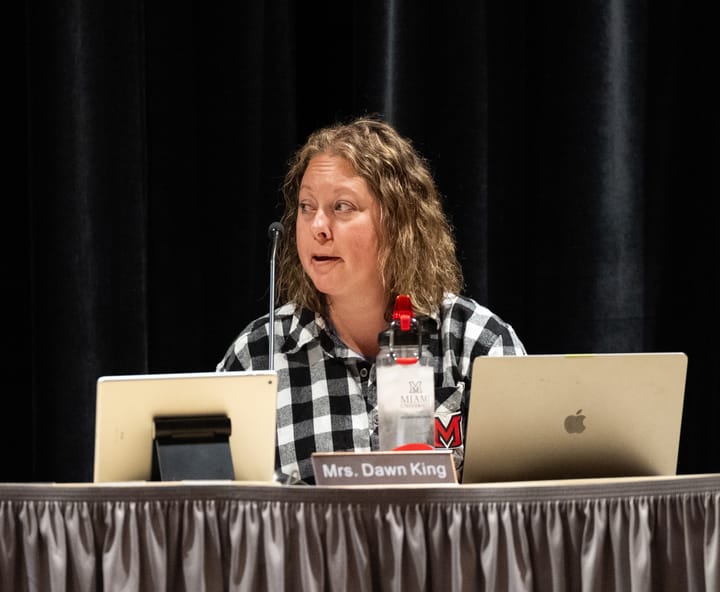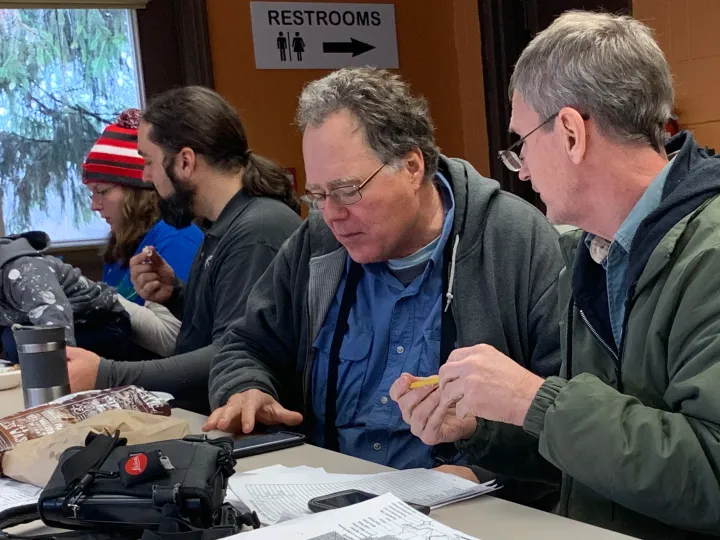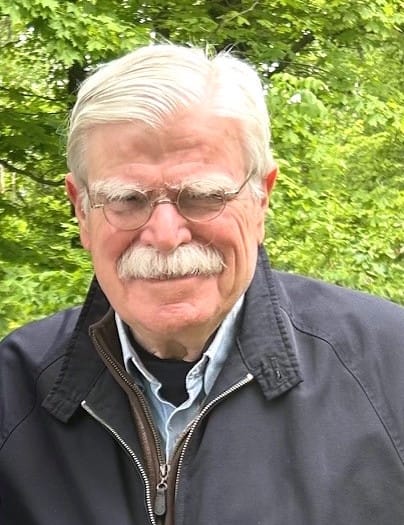Current program improvements, third-party help head discussion on deer management in Oxford
Oxford's deer hunting season is now in full swing.

Oxfordians learned more about the city’s deer management approach during an information session hosted by community groups and organizations on Sept. 21.
Biodiversity concerns
Charlie Stevens, co-president of Wild Ones Miami Valley chapter spoke about the importance of biodiversity within Oxford’s ecosystem. According to Stevens, increasing biodiversity is done by placing more natural plants in areas across Oxford.
“We spend a lot of money trying to put in native plants,” he said. “And like so many people, we are feeding deer (with the plants) and we would rather not.”
David Gorchov, Miami University professor and chair of the Miami University Natural Areas (MUNA) committee, added that a high number of white-tailed deer eating all kinds of plants increases the problem.
“Going back to the early 2000s, we had noticed a loss of biodiversity,” he said. “Particularly less and less wild flowers, less and less tree seedlings, and wondered whether the white-tailed deer … was responsible.”
Gorchov shared that in the 2024-2025 season, deer management in MUNA harvested 28 deer, while an additional 14 were harvested at the Ecology Research Center (ERC). In the previous season (2023-2024), harvested deer in MUNA decreased by two and increased by six at the ERC.
Andrew Dowdell, wildlife officer at the Ohio Department of Natural Resources (ODNR), was scheduled to speak during the meeting but did not show.
Deer overpopulation and management
David Prytherch, city council representative and vice-chair of the Parking and Transportation Advisory Board, explained the negatives attached to overpopulation, such as reduced biodiversity and tree canopy health, property and landscaping damage, and increased deer-vehicle interactions.
“In the state of Ohio, the average insurance cost for (hitting) a deer is in the three to five thousand (dollar) range,” Prytherch said.
Overpopulation also has an increased risk of disease transmission, such as Lyme disease. Three Lyme disease cases have been recorded in Butler County for 2025 thus far, according to the Ohio Department of Health.
Pryterch spoke about the current deer management program in Oxford, which utilizes bows to harvest deer.
According to a graphic provided at the meeting, the current program for the City of Oxford that focuses on Oxford areas, peaked during the 2012-2013 season, with 25 deer harvested. Since then, no single season has harvested over 15 deer, with the 2023-2024 season harvesting the lowest amount of deer at four.
Prytherch added that the city believes the current program will not be enough to lower the population, and contacting a third party organization to help would be an impactful option.
“I think what we've concluded is that our population right now is such that this is unlikely to bring the population back down into check,” Prytherch said.
The City of Oxford has worked with a Miami University senior capstone class to interview local and national United States Department of Agriculture (USDA) experts, as well as conduct case study research. This culminated in recommendations that were sent to the city on how to improve the program.
City staff also attended a wildlife management class with the USDA and the ODNR.
Improvements to the current deer management program were suggested at the community meeting on Sept. 21, which would ideally lower deer populations, according to Prytherch.
Some suggested improvements include allowing hunters to keep their harvested deer instead of donating them.
Another suggested improvement would be to set a mandate for all hunters to harvest a doe first and then allow each hunter to hunt up to that season’s “bag limit” set by ODNR.
Part of these improvements would entail an educational element for all hunters that would clarify and explain that the program is a population management program.
Expansion is another proposed aspect of improving the current deer management program. This would include expanding the number of hunters involved, creating a rotating schedule for hunters at viable locations and including more private property locations by decreasing the acreage requirement from five to three.
An important aspect of these improvements, according to Prytherch, would be to share improvement information and create easier access to signing up online.
White Buffalo Inc.
Contracting a third-party professional population management company, like White Buffalo Inc., is another option according to Prytherch. This company was discussed during an Aug. 5 city council meeting, but Prytherch said that the city has not yet contracted with the company.
White Buffalo Inc. has a long track record of work with white-tailed deer populations across the country.
“At this point,” Prytherch said, “they are the vendor that all the experts we have consulted (with) have referred to us.”
According to Dane Stevens, the head of operations at White Buffalo Inc., “We’ve been doing this same type of work for over 20 years now, in suburban communities all around the U.S.”
Prytherch added that this potential partnership between the City of Oxford and White Buffalo Inc. could be a multi-year project.
This project would cost the city $40,000 to kill 100 deer, starting in 2026.
According to the initial proposal brought to the city council on Aug. 5 , White Buffalo Inc. would start their survey work in November or December of 2026. This would include estimating the current deer population, looking for suitable hunting areas and talking to private property owners. The management aspect of their work would commence in February of 2027.
White Buffalo Inc. would harvest deer during the night, focusing on the wooded parts of Oxford. These areas include the Target Bull Run area, the Oxford Country Club and Stone and Hidden Creek neighborhoods.
White Buffalo Inc. would utilize a three person team to harvest deer over a two week period.
According to Dane Stevens’s presentation, the company’s goal would be to focus on 20 small properties with the intention of harvesting 10-20 deer per property.
“Right now, it’s really important for us to have community discussions,” Dane Stevens said, including the hunting process.
In order to prevent injuries to other individuals, White Buffalo Inc. hunting teams would conduct these hunts in an elevated position, facing directly down with their weapons.
Precision is also key to safety. With “every shot we take,” said Dane Stevens, “we assume it will miss.”
The hunting team would use suppressed firearms during this project, in order to not create too much noise to scare off other nearby deer and/or awaken community members during the late hours of the night. Dane Stevens explained that while these weapons will not be completely silent, they will greatly lower the noise levels.
Highly frangible copper bullets, which disintegrate upon contact with the animal, would be used according to Dane Stevens.
“By disintegrating, that means you don’t have a chance of a piece of a bullet ricocheting somewhere,” he said. “The bullet essentially turns to dust.”
After each kill, the team would zip-tie a plastic bag around the deer’s head and remove the carcass from the site.
“We are very specific and disciplined in timing the arrival of animals and conditioning them to come to these sites and getting them into a regular pack,” Dane Stevens said.
He added the importance of making sure deer don’t pick up on his team’s habits, such as hunting locations and the times of day hunting occurs.
“The whole goal is that every deer we take out is naive to the process from the first day we start,” Dane Stevens said. “And that goal (ensures) the long-term success of your project.”




